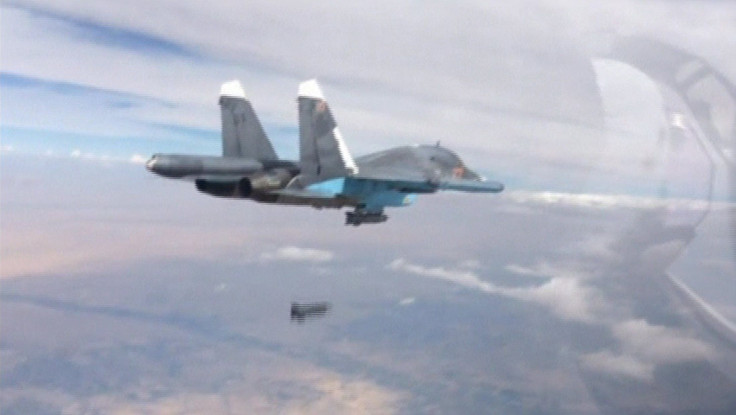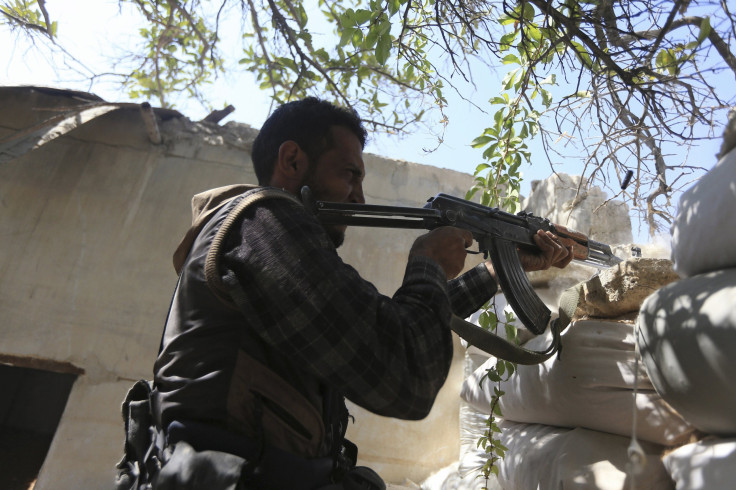US And Russia Try To Avoid Military Confrontation In Syrian Sky

Correction, Oct. 17, 2015, 5:49 a.m. EDT: A previous version of this article stated that Rami Jarrah was a former adviser to the U.S. training-and-equipment program in Syria. He was not. He was an activist who advocated for the Syrian opposition when he spoke with members of the U.S. administration.
The U.S. and Russia are establishing rules for their pilots flying over Syria to avoid military confrontation. The rules, which the Pentagon said are still being worked out, could include coordinating the use of Syrian airspace. But that kind of intelligence sharing, said rebels fighting the Islamic State group and President Bashar Assad’s regime in Aleppo, would give Russia the information it needs to more easily track and target them with airstrikes.
The discussions will let Moscow know not only America's targets, but who and what the U.S. military is trying to protect from the air. That would make the rebels even more vulnerable -- especially in Aleppo, the country’s second-largest city, where Assad is launching his next offensive.
“There were two instances where Russian jets flew deliberately near U.S. drones,” said Anna Borshchevskaya, an expert on Russian policy in Syria from the Washington Institute for Near East Policy, a think tank. “Russia’s actions raise questions about if it will stick to the air pact that is signed.”
The Russians have been bombing Syria for the past three weeks, and though President Vladimir Putin says his troops are targeting only the Islamic State group, also known as ISIS, the majority of Russian airstrikes are hitting rebel groups that received -- or are still receiving -- U.S. support.

Russia began targeting rebel groups like Jabhat Al Nusra, the extremist organization with ties to al Qaeda, as well as other opposition targets in Aleppo Wednesday. The airstrikes allowed the Islamic State group to recapture seven villages on the outskirts of the city last week alone, said rebels in Jaysh al Islam, a group that grew out of the now largely defunct Free Syrian Army.
“Aleppo is already very dangerous for us,” said Oussama Abu Zayd, an adviser to the rebels that received weapon support from the U.S. under a CIA program in 2013. “ISIS just keeps gaining ground in the countryside and when the Russians pick up their attacks, ISIS gains even more territory.”
So far the Russians have relied almost entirely on the Syrian regime to provide their pilots with intelligence for targets
“The Russians have a different role in Syria compared to the Iranians who actually have their own independent channels that allow them to source out their own information,” said Rami Jarrah, a Syrian activist.
Lacking accurate intelligence, Russian planes have on several occasions diverted from their flight paths to shadow U.S. predatory drones, said Col. David Warren, a spokesman for the Pentagon. The U.S. drones in Syria not only bomb ISIS targets, they also gather intelligence and satellite imagery about the locations of opposition groups backed by the U.S. -- the rebels that Russia wants to target, analysts say.
“Russia is very clearly targeting the moderate opposition. They are not in Syria to fight ISIS,” Borshchevskaya said.
After the first time Russian fighter jets purposely flew close to U.S. aircraft, Russia moved some of its Mi-24 helicopter gunships to a base near Homs, Syria, from a base near the Mediterranean, a shift of about 100 miles, according to a Fox News exclusive report.
For the past four years, President Barack Obama has kept the U.S. out of Syria, fearing not only another Mideast quagmire but also military confrontation with Russia, arguably Assad's strongest ally. Now, a year after the U.S. formed the international coalition to combat ISIS with airstrikes, Russia’s military intervention in Syria has left Obama with a choice: coordinate with Russia’s air force or risk falling into a direct air fight.
“The U.S. doesn’t want clashes with Russia, but the Russians have created that potential with their intervention,” Borshchevskaya said.
There is not much the U.S. can do to prevent Russia from targeting rebel groups it has armed in Aleppo. But America should share information from the air pact talks with the rebels on the ground, said Abu Zayd.
“Until now there has been no good way to coordinate U.S. coalition airstrikes with rebel troop movement,” he said. “We need the coalition, but there needs to be more discussion about the conditions and movements on the ground. The reason why the train-and-equip program with the U.S. didn't work is because they didn't understand anything that was going on on the ground.”
It is not clear when the U.S. and Russia will sign the air pact, but the State Department said officials in the U.S. administration met with their Russian counterparts Thursday and would continue those discussions for the next few days.
© Copyright IBTimes 2024. All rights reserved.




















